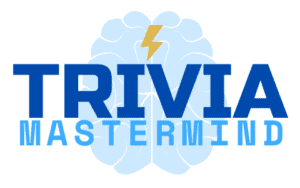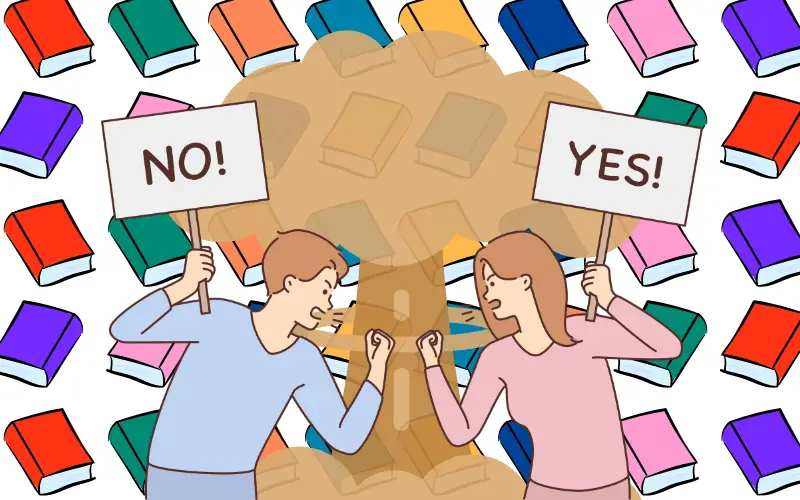
The following list of 15 books have been challenged or banned for a variety of reasons, including their content, themes, or language. They are considered to be by many, the 15 of the Most controversial books of all time. Some of the most common reasons for challenging or banning books include:
- Intimacy related content: Books that contain explicit descriptions of intimacy.
- Violence: Books that contain graphic violence or descriptions of violence.
- Language: Books that contain profanity or other offensive language.
- Religious content: Books that contain religious content that is considered offensive or controversial.
- Political content: Books that contain political content that is considered offensive or controversial..
It is important to note that not everyone who challenges or bans a book agrees with the reasons for doing so. Some people may challenge or ban books because they believe that the content is harmful or inappropriate for certain audiences. Others may challenge or ban books because they disagree with the author’s message or viewpoint.
The List of the 15 Most Controversial Books of all Time
15. Gender Queer: A Memoir
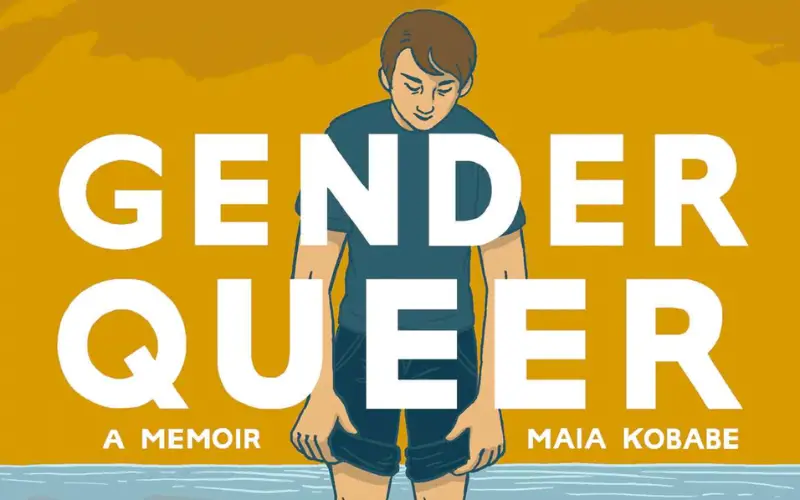
Synopsis of Gender Queer: A Memoir
Gender Queer: A Memoir by Maia Kobabe, is a graphic novel that tells the story of Kobabe’s journey of self-discovery as a non-binary person. The book is divided into four parts: “Gender,” “Intimacy,” “Coming Out,” and “Healthcare.” In each part, Kobabe shares their experiences with gender, intimacy, and healthcare, as well as their thoughts and feelings about these topics.
Gender Queer provides a look at the lives of non-binary people. Kobabe’s insight is both honest and vulnerable, providing information to those wanting to learn more about gender identity and non-binary people.
Here are some of the themes explored in Gender Queer:
- Gender identity: What does it mean to be a boy, a girl, or something else?
- Intimacy: What is preferred orientation? How does it relate to gender identity?
- Coming out: How do you tell people about your gender identity and/or intimate preferences?
- Healthcare: What are the challenges of getting healthcare as a non-binary person?
The Controversy of Gender Queer
While the book Gender Queer has been praised for its honesty and vulnerability, it has also been criticized for its content. Some people have objected to the book’s graphic depictions and discussions around gender identity.
Here are some of the specific objections that have been raised about Gender Queer:
- Intimacy & nudity: The book contains graphic depictions of intimacy and nudity.
- Gender identity & intimacy: The book discusses gender identity and intimacy in a way that some people find confusing or offensive.
- Children’s Curriculum: The book is being used to teach children about gender identity and intimacy, which some people believe is inappropriate.
The controversy surrounding Gender Queer is a reflection of the larger debate about gender identity and intimacy in society. Some people believe that gender is a binary, with people being either male or female. Others believe that gender is a spectrum, and that people can identify as any gender they choose. The controversy over Gender Queer also reflects the larger debate about censorship. Some people believe that books should not be banned, even if they contain content that some people find objectionable. Others believe that books should be banned if they contain content that is harmful or dangerous.
14. Fun Home
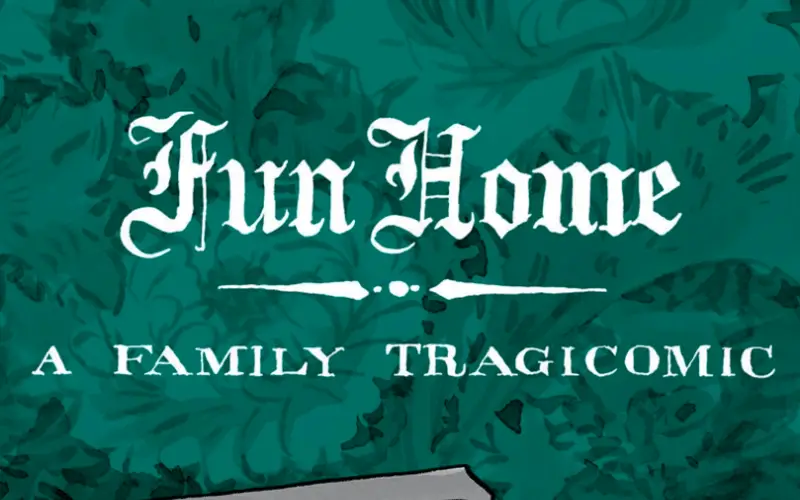
Synopsis of Fun Home
Fun Home: A Family Tragicomic is a 2006 graphic novel memoir by the American cartoonist Alison Bechdel. The memoir focuses on Bechdel’s family, and is centered on her relationship with her father, Bruce. Bruce was a funeral director and high school English teacher in Beech Creek, where Alison and her siblings grew up.
The book’s title comes from the family nickname for the funeral home, the family business in which Bruce grew up and later worked; the phrase also refers ironically to Bruce’s tyrannical domestic rule. Bruce’s two occupations are reflected in Fun Home’s focus on death and literature. In the beginning of the book, the memoir exhibits Bruce’s obsession with restoring the family’s Victorian home.
Throughout the book, Bechdel explores her relationship with her father, her own intimacy preferences, and the role of literature in her life. She also explores the ways in which her father’s closeted same-sex attraction and his own father’s suicide shaped him and his family.
Fun Home is a complex that explores the many facets of family, identity, and love, while also addressing themes of intimacy preference, gender roles, suicide, emotional abuse, dysfunctional family life, and the role of literature in understanding oneself and one’s family.
The Controversy of Fun Home
Some people have objected to Fun Home‘s graphic depictions of intimacy and nudity, while others have objected to its discussion of same-sex attraction and suicide.
Here are some of the specific objections that have been raised about Fun Home:
- Intimacy & nudity: The book contains graphic depictions of intimacy and nudity.
- Same-sex attraction: Some feel it is described in a way that could be confusing or offensive.
- Suicide: The book depicts suicide, which some people believe is harmful to children.
In 2013, Fun Home was removed from the summer reading list for incoming freshmen at the College of Charleston in South Carolina. The book was later restored to the reading list after a public outcry. In 2014, Fun Home won the Pulitzer Prize for General Non-Fiction. The book’s win was met with mixed reactions, with some people praising the book for its importance and others criticizing the Pulitzer Prize for awarding a graphic novel.
The controversy surrounding Fun Home is a reflection of the larger debate about LGBTQ+ rights and representation in society. Some people believe that LGBTQ+ people should be able to tell their stories without fear of censorship or discrimination, while others believe that LGBTQ+ content should not be made available to children.
13. Maus
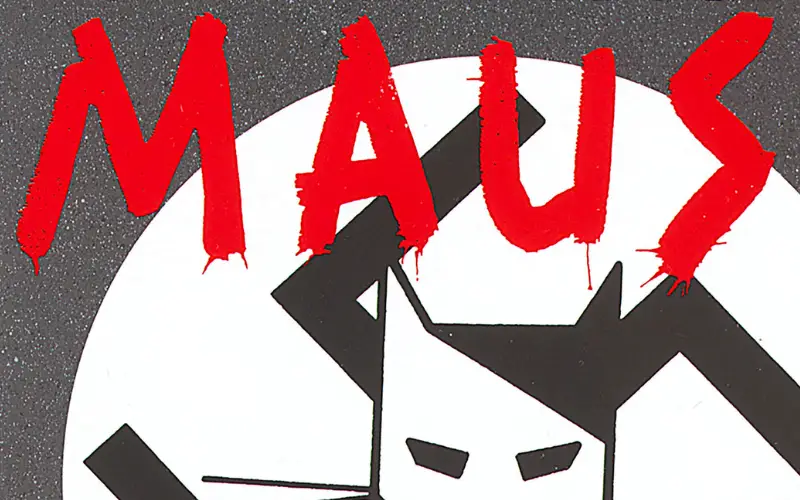
Synopsis of Maus
Maus is a two-volume graphic novel by Art Spiegelman that tells the story of his father, Vladek Spiegelman, a Polish Jew who survived the Holocaust. The book is divided into two parts: “My Father Bleeds History” and “And Here My Troubles Began.”
In the first part, Art Spiegelman interviews his father about his experiences during the Holocaust. Vladek tells Art about his life in Poland before the war, his experiences in the concentration camps, and his liberation. Art also draws a parallel between his own relationship with his father and Vladek’s relationship with his own father.
In the second part, Art Spiegelman continues to interview his father about his experiences during the Holocaust. Vladek tells Art about his life after the war, his marriage to Art’s mother, and his struggles to rebuild his life. Art also explores his own feelings about his father and the Holocaust.
Here are some of the themes explored in Maus:
- The Holocaust: What was it like to live through the Holocaust? How did it affect the survivors?
- Father-son relationships: How do fathers and sons relate to each other? What can we learn from our fathers?
- The power of storytelling: How can stories help us to understand the past and the present?
The Controversy of Maus
Maus was first published in 1986 and has been praised for its honesty, humor, and artistry. However, it has also been the subject of controversy. Some people have objected to the book’s use of animals to represent different groups of people. In Maus, Jews are depicted as mice, Nazis are depicted as cats, and Poles are depicted as pigs. Some people believe that this is offensive and disrespectful to the victims of the Holocaust. Others have objected to the book’s content. Maus contains graphic depictions of violence, including the murder of Jews by Nazis. Some people believe that this is too disturbing for children and should not be taught in schools.
In 2022, a school board in Tennessee voted to remove Maus from its curriculum due to concerns about the book’s content. The decision sparked a national debate about the role of graphic novels in education and the importance of teaching about the Holocaust.
Despite the controversy, Maus has remained a popular and influential book. It has been translated into over 20 languages and has won numerous awards, including the Pulitzer Prize for Literature. The controversy surrounding Maus is a reminder that the Holocaust is a sensitive topic that can still be difficult to discuss. However, it is also a reminder that the Holocaust is an important part of history that should not be forgotten.
12. Handmaid’s Tale
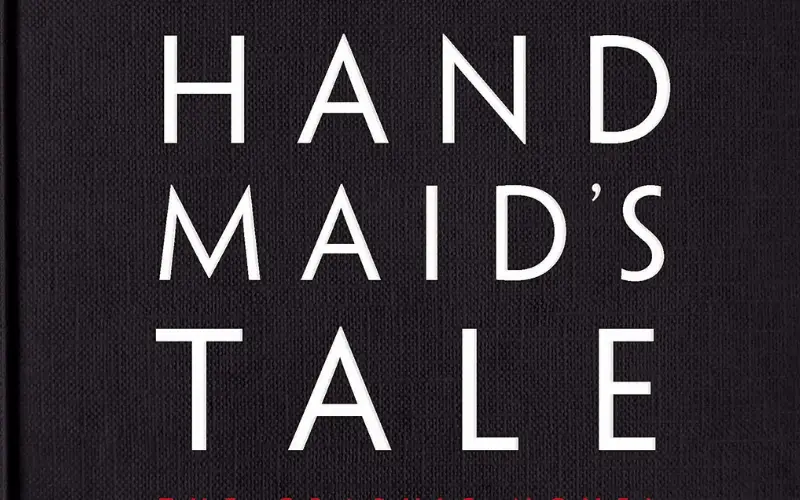
Synopsis of Handmaid’s Tale
The Handmaid’s Tale is a dystopian novel by Canadian author Margaret Atwood, published in 1985. It is set in a near-future New England in a totalitarian theocratic state known as the Republic of Gilead, which has overthrown the United States government. Offred is the central character and narrator and one of the “handmaids”, women who are forcibly assigned to produce children for the “commanders”, who are the ruling class in Gilead.
The novel is told in the first person from Offred’s point of view. She describes her life in Gilead, which is a repressive and misogynistic society. Women are divided into different classes, based on their reproductive abilities. Handmaids are the most fertile women, and they are forced to bear children for the commanders.
The Handmaid’s Tale is a powerful and disturbing novel that explores the themes of women’s rights, oppression, and freedom. It has been praised for its originality, its strong female characters, and its thought-provoking themes.
The novel has been adapted into a film, a television series, and a stage play. It has also been translated into over 40 languages.
The Controversy of Handmaid’s Tale
The Handmaid’s Tale by Margaret Atwood has been the subject of controversy since its publication in 1985. Some people have objected to the book’s depiction of a totalitarian society in which women are oppressed and forced to bear children for the ruling class. Others have objected to the book’s use of violence and intimacy related content.
Here are some of the specific objections that have been raised about The Handmaid’s Tale:
- Totalitarian society: It is seen by some as too extreme and unrealistic by some.
- Violence & intimacy related content: It is seen by some as gratuitous and disturbing by some.
- The portrayal of women: It is seen by some as misogynistic and offensive by some.
The controversy surrounding The Handmaid’s Tale is a reminder that the book is a powerful and disturbing work of fiction that has the potential to spark important conversations about the future of our world. Despite the controversy, The Handmaid’s Tale remains a popular and influential book. It has been praised for its originality, its strong female characters, and its thought-provoking themes. The book has also been adapted into a film, a television series, and a stage play.
11. Slaughterhouse-Five
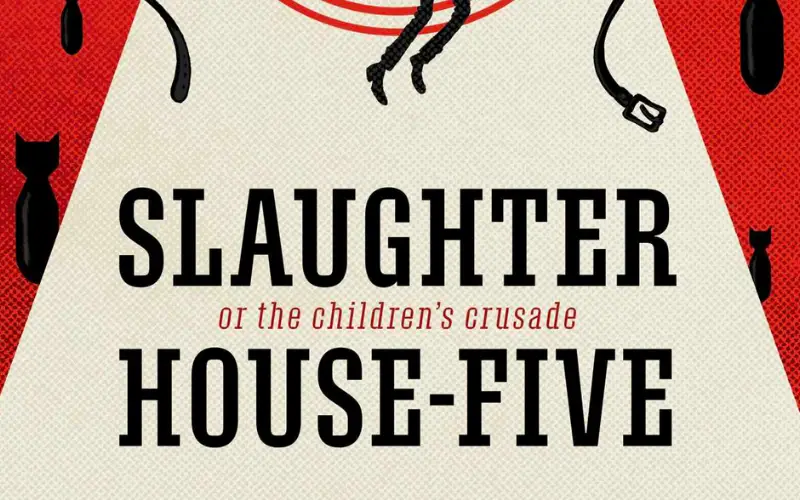
Synopsis of Slaughterhouse-Five
Slaughterhouse-Five, or The Children’s Crusade: A Duty-Dance with Death is a semi-autobiographical science fiction-infused anti-war novel by Kurt Vonnegut. It follows the life and experiences of Billy Pilgrim, from his early years, to his time as an American soldier and chaplain’s assistant during World War II, to the post-war years, with Billy occasionally traveling through time. The text centers on Billy’s capture by the German Army and his survival of the Allied firebombing of Dresden as a prisoner of war, an experience which Vonnegut himself lived through as an American serviceman.
Slaughterhouse-Five is a darkly comic novel that explores the themes of war, death, and the meaning of life. It is a powerful and disturbing work of fiction that has had a lasting impact on American culture.
Here are some of the themes explored in Slaughterhouse-Five:
- War: What is the nature of war? What are the consequences of war?
- Death: What is the meaning of death? How do we cope with death?
- Time: What is the nature of time? Can we travel through time?
- Imagination: What is the power of imagination? How can imagination help us to cope with the horrors of war?
The Controversy of Slaughterhouse-Five
Slaughterhouse-Five has been the subject of controversy since its publication in 1969. Some people have objected to the book’s depiction of war, death, and violence. Others have objected to the book’s use of language, including profanity and intimacy references.
In 1972, the book was banned from the Rochester Community Schools in Oakland County, Michigan. The circuit judge described the book as “depraved, immoral, psychotic, vulgar and anti-Christian.” The book was later reinstated.
In 1982, the Island Trees Union Free School District in New York removed Slaughterhouse-Five and eight other books from its junior high and high school libraries. The board of education called the books “anti-American, anti-Christian, anti-Semitic, and just plain filthy.” The case went to the Supreme Court, which ruled in favor of the students in a 5-4 decision.
Slaughterhouse-Five has also been challenged in other school districts and libraries. In 2011, the Republic High School in Missouri removed the book from its curriculum. The school board cited concerns about the book’s language and content.
Despite the controversy, Slaughterhouse-Five remains a popular and influential book. It has been praised for its honesty, humor, and insights into the nature of war. The book has won numerous awards, including the Hugo Award, the Nebula Award, and the Prometheus Award.
Read More Fun Facts
Learn more fun facts with Trivia Mastermind content.
10. Absolutely True Diary of a Part-Time Indian
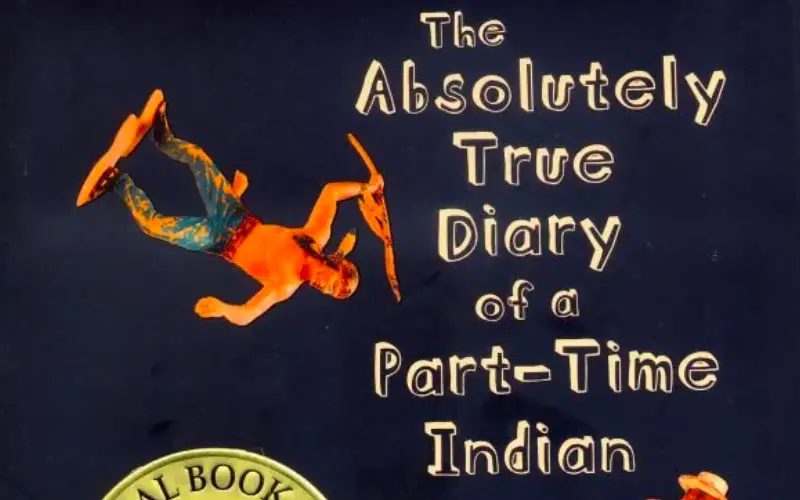
Synopsis of Absolutely True Diary of a Part-Time Indian
The Absolutely True Diary of a Part-Time Indian is a semi-autobiographical novel by Sherman Alexie. It tells the story of Arnold Spirit Jr., a 14-year-old Spokane Indian boy who decides to leave his reservation and attend a predominantly white high school in Reardan, Washington.
Arnold is a gifted artist and cartoonist, and he hopes that attending Reardan will give him a better chance at a successful future. However, he soon finds that life on the rez and life off the rez are very different. On the rez, he is surrounded by his family and friends, and he feels like he belongs. Off the rez, he is often the only Indian student in his classes, and he feels like an outsider.
Arnold struggles to fit in at Reardan, and he often feels like he is betraying his culture. He also faces racism from his white classmates, and he is eventually attacked by a group of white boys. Despite the challenges, Arnold eventually finds his place at Reardan. He makes friends with some of his classmates, and he even starts dating a white girl. He also continues to draw and write, and he eventually wins a national art award.
The Controversy of Absolutely True Diary of a Part-Time Indian
The Absolutely True Diary of a Part-Time Indian has been the subject of some controversy. Some people have objected to the book’s language and content, which includes references to alcohol, poverty, bullying, violence, intimacy, and drug use. Others have objected to the book’s portrayal of Native Americans, arguing that it is stereotypical and inaccurate.
Here are some of the specific objections that have been raised about The Absolutely True Diary of a Part-Time Indian:
- Language: It is seen by some to be often coarse and vulgar.
- Content: It is seen by some to be disturbing and may be upsetting to some readers.
- Portrayal: It is seen by some that the portrayal of Native Americans is stereotypical and inaccurate.
In 2013, the book was challenged in the West Valley School District in Washington state. The school district’s board of directors voted to remove the book from the district’s curriculum, citing concerns about the book’s language and content. The decision was met with protests from students, parents, and teachers, who argued that the book was an important work of literature that should be taught in schools.
The controversy over The Absolutely True Diary of a Part-Time Indian is a reminder that books can be powerful tools for teaching and learning. It is also a reminder that books can be controversial, and that people will have different opinions about what is appropriate for children to read.
9. Kite Runner
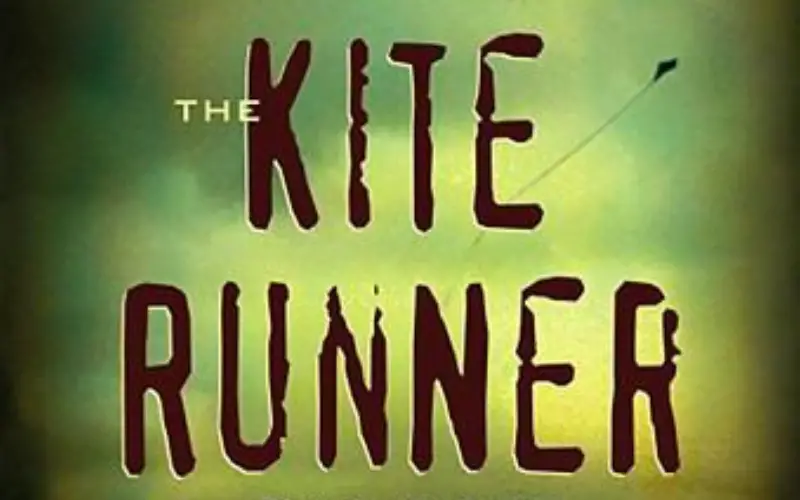
Synopsis of Kite Runner
The Kite Runner is a novel set in Afghanistan and the United States. It tells the story of Amir, a young boy from the Wazir Akbar Khan district of Kabul who is tormented by the guilt of abandoning his friend Hassan.
In 1978, Amir is 12 years old and lives with his wealthy father, Baba, and his father’s loyal servant, Ali, and Ali’s son, Hassan. Amir is a Pashtun, while Hassan is a Hazara, an ethnic minority. Amir is a bookish boy who is not good at sports, while Hassan is a talented athlete who is Amir’s best friend.
One day, Amir and Hassan are playing kite-fighting, a popular sport in Afghanistan. Amir is the kite runner, which means that he chases the kites that have been cut loose by their opponents. Hassan is the kite catcher, which means that he retrieves the kites. Amir is determined to win the kite-fighting tournament, and he asks Hassan to help him. Hassan agrees, and they work together to win the tournament.
However, Amir’s victory is short-lived. Later that day, Amir witnesses Assef, a local bully, assault Hassan. Amir is too afraid to intervene, and he watches as Assef beats Hassan. Amir feels guilty and ashamed, and he blames himself for what happened to Hassan. A few years later, the Soviet Union invades Afghanistan. Amir and Baba are forced to flee Kabul and move to the United States. Amir leaves Hassan behind, and he carries the guilt of his betrayal with him for many years.
Years later, Amir returns to Afghanistan to find Hassan and to make amends for his past mistakes. He finds that Hassan has been killed by the Taliban, and that he has left behind a son, Sohrab. Amir takes Sohrab back to the United States, and he raises him as his own son.
The Controversy of Kite Runner
The Kite Runner has been the subject of some controversy, mostly due to the assault scene involving the young characters Amir and Hassan. Some people have objected to the scene, arguing that it is too graphic and disturbing. Others have argued that the scene is an important part of the story and that it accurately portrays the violence and abuse that children can face.
Here are some of the specific objections that have been raised about The Kite Runner:
- Assault: It is seen by some to be too graphic and disturbing.
- Violence & abuse: It is seen by some to be too realistic and may be upsetting to some readers.
- Same-sex attraction: It is seen by some to be offensive to some readers.
In 2010, the book was challenged in the San Francisco Unified School District. The school district’s board of education voted to remove the book from the district’s curriculum, citing concerns about the assault scene. The decision was met with protests from students, parents, and teachers, who argued that the book was an important work of literature that should be taught in schools.
The controversy over The Kite Runner is a reminder that books can be powerful tools for teaching and learning. It is also a reminder that books can be controversial, and that people will have different opinions about the type of literature children should be exposed to.
8. Harry Potter Series
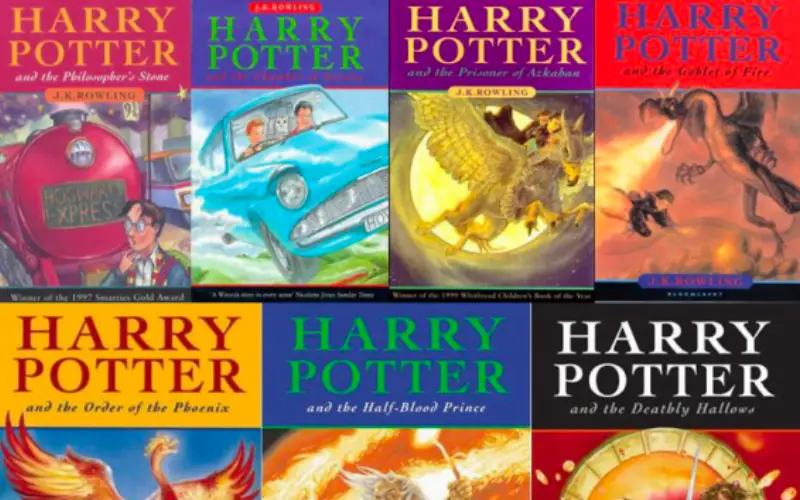
Synopsis of Harry Potter Series
The Harry Potter series is a fantasy series written by British author J. K. Rowling. The novels chronicle the lives of a young wizard, Harry Potter, and his friends Hermione Granger and Ron Weasley, all of whom are students at Hogwarts School of Witchcraft and Wizardry. The main story arc concerns Harry’s struggle against Lord Voldemort, a dark wizard who intends to become immortal, overthrow the wizard governing body known as the Ministry of Magic and subjugate all wizards and Muggles (non-magical people).
The novels are set in the fictional world of Harry Potter, where magic is commonplace. The main characters are students at Hogwarts School of Witchcraft and Wizardry, and the books chronicle their adventures as they learn about magic and battle dark forces.
Here are some of the themes explored in the Harry Potter series:
- Good vs. evil: The Harry Potter series is a classic battle between good and evil.
- Friendship: The Harry Potter series is also about the power of friendship.
- Love: The Harry Potter series also explores the power of love.
- Death: The Harry Potter series also deals with the topic of death.
The Controversy of the Harry Potter series
The Harry Potter series has been the subject of some controversy since its publication in 1997. Some of the criticisms leveled against the series include:
- Violence: The books contain scenes of violence, including battles between wizards, duels with dark creatures, and the killing of several characters.
- Use of stereotypes: The books have been criticized for using stereotypes about witches, wizards, and Muggles (non-magical people).
- Religious overtones: Some critics have argued that the books have religious overtones, and that they promote a particular religious viewpoint.
Despite the criticism, the Harry Potter series remains one of the most popular and beloved book series of all time. The books have inspired a generation of readers, and they continue to be enjoyed by people of all ages.
7. Lord of the Flies
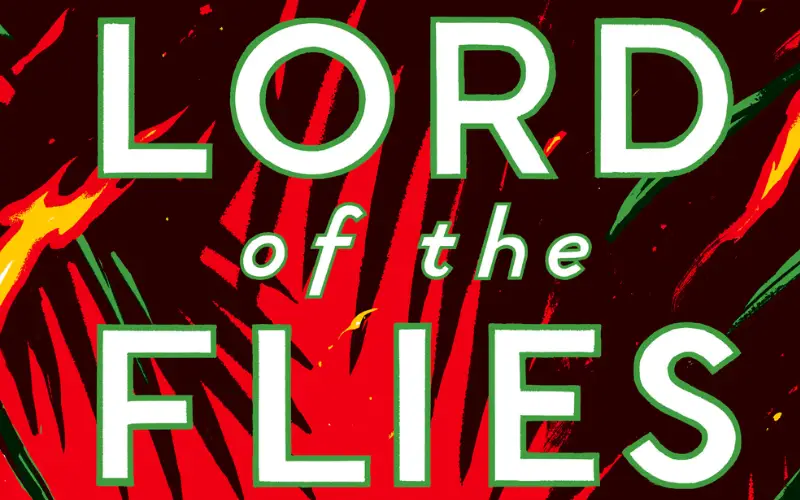
Synopsis of Lord of the Flies
In the story of Lord of the Flies, during a nuclear war, a British airplane carrying a group of British schoolboys crashes on an uninhabited island. The boys are stranded on the island with no adults to guide them. They quickly form two groups: one led by Ralph, a fair-haired boy who wants to build a signal fire and a shelter, and the other led by Jack, a dark-haired boy who wants to hunt and explore the island.
The two groups soon come into conflict. Ralph’s group believes that they should work together to survive, while Jack’s group believes that they should do whatever it takes to survive, even if it means resorting to violence.
As the story progresses, the boys become more and more savage. They kill a wild boar, and they even kill one of their own, a boy named Simon. In the end, Ralph is the only boy left from his group. He is rescued by a British naval officer, but he is left traumatized by his experiences on the island.
Here are some of the themes explored in Lord of the Flies:
- The savagery of human nature: Lord of the Flies explores the idea that humans are naturally savage creatures.
- The importance of civilization: Lord of the Flies suggests that civilization is necessary to keep human nature in check.
- The power of evil: Lord of the Flies shows how evil can take root in even the most innocent of places.
The Controversy of Lord of the Flies
Lord of the Flies is a classic novel that has been controversial since its publication in 1954. Some of the criticisms leveled against the novel include:
- Violence: The novel contains scenes of violence, including the killing of a character by a group of boys.
- Use of language: The novel contains some profanity and other offensive language.
- Themes: The novel explores some dark themes, such as the savagery of human nature and the power of evil.
Despite the controversy, Lord of the Flies remains a classic novel that is widely read and studied. The novel has been praised for its powerful message and its insights into human nature. With that, there have been many who have argued against teaching Lord of the Flies.
Ultimately, the decision of whether or not to teach Lord of the Flies is a bit tricky, as there are adult themes and situations present in the story. Irrespective of this, there are many who argue that the literary value outweighs the coarseness in which these scenarios are presented, and provide a valuable look into human nature worth examining.
6. Beloved
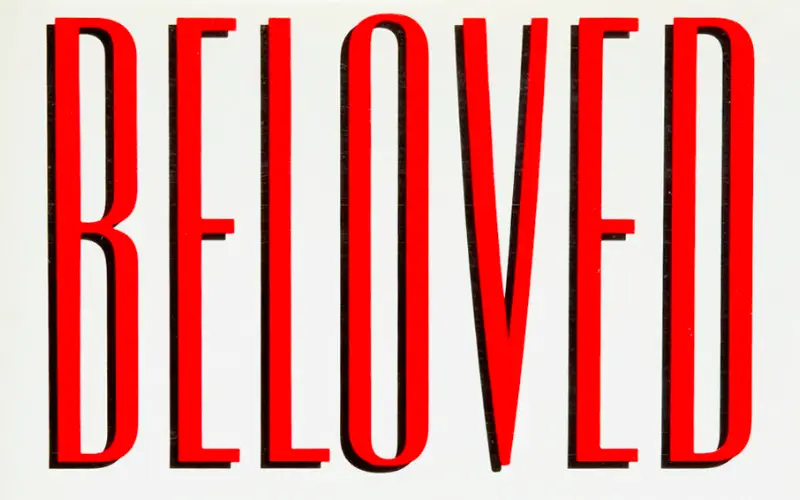
Synopsis of Beloved
Beloved by Toni Morrison is about Sethe, is a former slave who has escaped to Cincinnati, Ohio, with her baby daughter, Denver. She is haunted by the memory of her other children, who were taken from her and sold into slavery. One day, a mysterious woman named Beloved arrives at Sethe’s house. Beloved is the ghost of Sethe’s murdered daughter, and her arrival forces Sethe to confront the trauma of her past.
Here are some of the key themes of Beloved:
- Slavery: The novel explores the legacy of slavery, demonstrating the physical and psychological traumas.
- Racism: Beloved also explores the theme of racism, showing how it can continue to haunt people.
- Trauma: The novel also examines the power of trauma and how it can shape a person’s life.
- Love: Beloved is also a novel about the power of love and how it can give people strength to move on.
The Controversy of Beloved
Beloved, a Pulitzer Prize-winning novel by Toni Morrison, was met with much controversy since its initial publication. Some of the criticisms leveled against the novel include:
- Violence: The novel contains graphic descriptions of violence, including the murder of a child.
- Intimacy: The novel contains explicit descriptions of intimacy, including a scene of incest.
- History: The novel is loosely based on the true story of Margaret Garner, a slave who killed her own daughter rather than see her returned to slavery. Some historians have objected to the novel’s historical inaccuracies.
Despite the controversy, Beloved remains a critically acclaimed novel that is widely read and studied. The novel has been praised for its powerful writing and its insights into the human experience. While the book covers many uncomfortable topics, many still argue that there is significant importance in examining the topics from a young age.
Play Trivia!
Challenge yourself and play trivia questions with answers and explanations.
5. The Color Purple
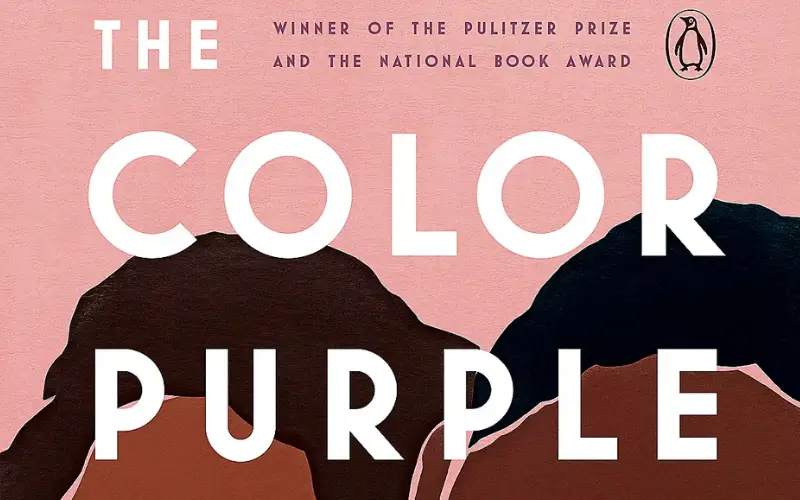
Synopsis of The Color Purple
The Color Purple is a coming-of-age novel that tells the story of Celie, a young black woman living in the American South during the early 1900s. Celie is a poor, uneducated woman who is repeatedly abused by her father, her husband, and her brother-in-law. Through a series of letters to God, Celie tells the story of her life and her journey to find love, strength, and self-acceptance.
The novek is a powerful and moving story about the strength of the human spirit. The Color Purple was a critical and commercial success, winning the Pulitzer Prize and being adapted into an Academy Award-winning film in 1985.
Here are some of the key themes of The Color Purple:
- Racism: It shows how racism can impact every aspect of a person’s life, from their education to their employment to their relationships.
- Sexism: It shows how sexism can be used to justify the abuse of women.
- Domestic violence: It shows how domestic violence can have a devastating impact on a person’s physical and emotional health.
- Love: It shows how love can help people to heal from trauma and how it can give them the strength to move on.
The Controversy of The Color Purple
The Color Purple has been controversial since its publication in 1982, with criticisms levied against it. Some of these criticisms include:
- Language: The novel contains explicit language, including profanity and references of intimacy.
- Themes: The novel explores some dark themes, such as racism, sexism, and domestic violence.
- Accuracy: The novel is loosely based on the author’s own experiences, but it has been criticized for its inaccuracies. Some readers have objected to the novel’s portrayal of black people, arguing that it is stereotypical and demeaning.
Despite the controversy, The Color Purple remains a critically acclaimed novel that is still studied today. The novel has been praised for its powerful writing and its insights into the human experience. While not all would agree, there are many who would argue that, people should be aware of these troubling themes at a young age to avoid a cycle of perpetuation.
4. 1984
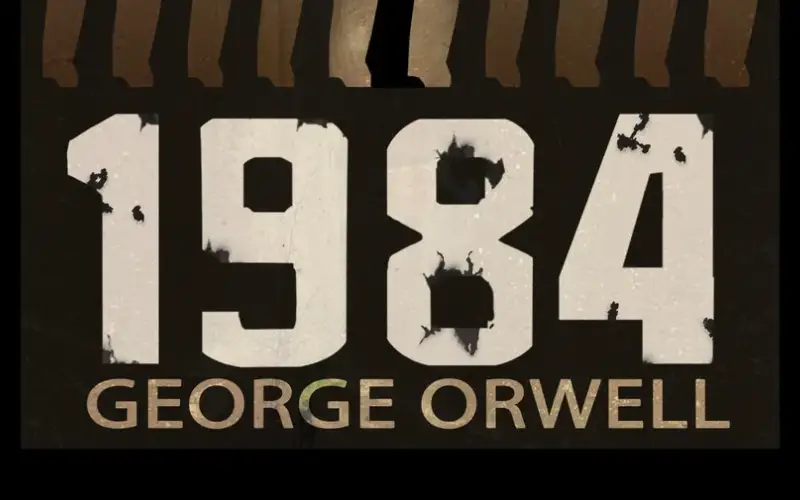
Synopsis of 1984
1984 is a dystopian social science fiction novel and cautionary tale. The novel is set in Airstrip One, a province of Oceania, a totalitarian state that is constantly at war with its neighbors. The protagonist, Winston Smith, is a diligent mid-level worker at the Ministry of Truth, where his job is to rewrite historical records to match the current party line. Winston is secretly critical of the Party and begins to keep a diary, a thoughtcrime in Oceania. He also falls in love with Julia, a fellow rebel.
Winston and Julia join the Brotherhood, a secret organization dedicated to overthrowing the Party. They are eventually caught by the Thought Police and tortured into submission. Winston is released from prison, but he has been broken and has lost all hope for the future.
Here are some of the key themes of 1984:
- Totalitarianism: The Party in 1984 is a totalitarian state that controls every aspect of its citizens’ lives, using propaganda, surveillance, and violence to maintain power.
- Thoughtcrime: The Party uses Thought Police to monitor its citizens and punish those who commit thoughtcrimes.
- Language: The Party uses Newspeak, a simplified language that is designed to limit thought and expression.
- Love: The Party tries to destroy love by promoting hatred and fear.
- Hope: 1984 is a bleak novel, but it does not end in despair. Winston Smith survives, and he retains a small spark of hope for the future.
The Controversy of 1984
The novel 1984 by George Orwell was met with controversy since its initial publication. There have been many who have argued that the themes of the novel are too adult oriented for a general audience. Some of the controversies surrounding the novel include:
- Its depiction of totalitarianism: 1984 is a dystopian novel that depicts a totalitarian state where the government controls every aspect of its citizens’ lives, thats some see as being too extreme and unrealistic.
- Its use of Newspeak: Newspeak is a fictional language created by the government, designed to limit thought and expression, which has been criticized as being a tool of oppression.
- Its ending: The ending of 1984 is ambiguous. Winston Smith, the protagonist, is tortured into submission by the government, but he retains a small spark of hope for the future. Some readers have interpreted this ending as a message of hope, while others have interpreted it as a message of despair.
In recent years, there has been renewed interest in 1984 due to the rise of authoritarian regimes around the world. The novel’s depiction of totalitarianism has been seen as a warning about the dangers of such regimes. It is a complex and thought-provoking novel that has been the subject of much debate. It is a novel that is still relevant today, and it is a novel that is sure to continue to be debated for many years to come.
3. Catcher in the Rye
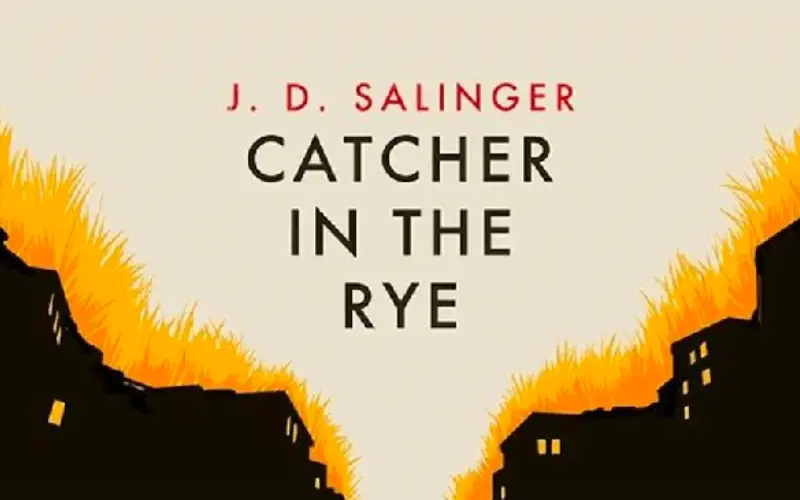
Synopsis of Catcher in the Rye
The Catcher in the Rye is a novel by J. D. Salinger, partially published in serial form in 1945–1946 and as a novel in 1951. The novel is narrated by Holden Caulfield, a 16-year-old boy who has just been expelled from Pencey Prep, his fourth school. Holden is intelligent and perceptive, but he is also deeply cynical and disillusioned with the adult world. He sees adults as “phonies” who are only interested in money, status, and appearances.
Holden spends the next few days wandering around New York City, trying to figure out what he wants to do with his life. He meets a variety of people, including a prostitute, a nun, and a former teacher. He also has a brief encounter with his younger sister, Phoebe. In the end, Holden is unable to find any answers to his questions. He checks himself into a mental hospital, where he begins to come to terms with his own problems.
Here are some of the key themes of The Catcher in the Rye:
- Innocence: Holden is a child at heart, and he longs for a world where people are still innocent and carefree.
- Loss: Holden has lost a lot in his life. He has lost his faith in the adult world, and he has lost his innocence. He is also grieving the loss of his younger brother, Allie, who died of leukemia.
- The search for meaning: Holden is searching for meaning in his life. He is not sure what he wants to do with his life, and he is not sure what he believes in.
The Controversy of Catcher in the Rye
In recent years, there has been renewed interest in The Catcher in the Rye due to the rise of social media and the increasing isolation of teenagers. The novel’s themes of alienation and loneliness have resonated with many young people, and it has been seen as a valuable resource for understanding the challenges of adolescence.
Here are some of the specific reasons why The Catcher in the Rye has been banned from schools and libraries:
- Profanity: The novel contains profanity.
- Intimacy related content: The novel contains references to prostitution and premarital intimacy.
- Violence: The novel contains a scene in which Holden threatens to kill himself.
- Alcoholism: The novel mentions that Holden’s older brother, D.B., is an alcoholic.
- Drug use: The novel mentions that Holden’s roommate, Ward Stradlatter, smokes marijuana.
The Catcher in the Rye is a complex and thought-provoking novel that has been the subject of much debate. It is a novel that is still relevant today, and it is a novel that is sure to continue to be debated for many years to come, with many still believing the topics of the novel are too extreme for children and adolescents to read about.
2. To Kill a Mockingbird
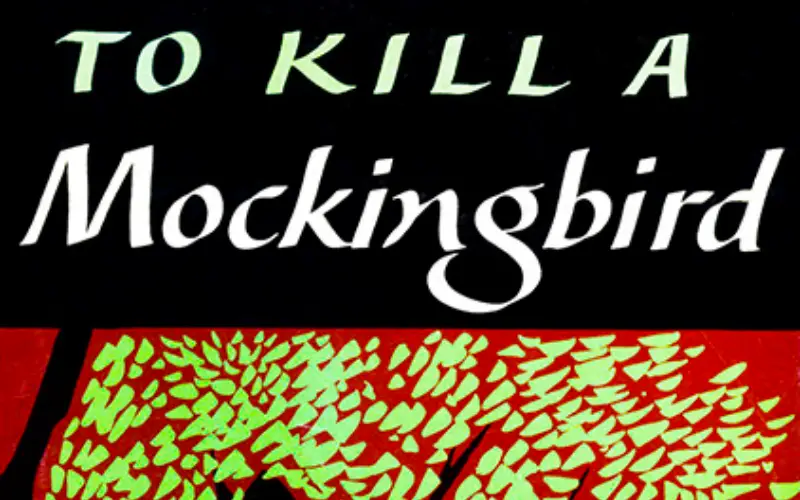
Synopsis of To Kill a Mockingbird
To Kill a Mockingbird is a novel by Harper Lee published in 1960. It was instantly successful, winning the Pulitzer Prize and quickly becoming a classic of modern American literature. The novel tells the story of a young girl named Scout Finch growing up in the fictional town of Maycomb, Alabama, during the Great Depression. Scout and her brother, Jem, are raised by their widowed father, Atticus, a lawyer who is appointed to defend Tom Robinson, a black man falsely accused of assaulting a white woman. The trial exposes the town’s racism and prejudice, and it forces Scout and Jem to confront the harsh realities of the world around them.
Here are some of the key themes of To Kill a Mockingbird:
- Courage: Atticus Finch is a courageous man who is willing to stand up for what he believes in, even when it is unpopular, teaching his children the importance of courage in the face of adversity.
- Compassion: Atticus Finch is also a compassionate man who is willing to defend Tom Robinson, a black man falsely accused of assault.
- The importance of standing up for what is right: Atticus Finch teaches Scout and Jem the importance of standing up for what is right, even when it is difficult.
The Controversy of To Kill a Mockingbird
In recent years, there has been renewed interest in To Kill a Mockingbird due to the rise of minority focused social movements. The novel’s message of racial tolerance and its depiction of the racism and prejudice that existed in the American South during the 1930s have resonated with many people today. To Kill a Mockingbird has been the subject of controversy since its publication in 1960.
Some of the reasons for the controversy include:
- Racism: The novel depicts the racism and prejudice that existed in the American South during the 1930s.
- Racial slurs: The novel uses racial slurs to refer to black people.
- Message: Some people have argued that the novel’s message of racial tolerance is outdated and that it does not reflect the reality of race relations in the United States today.
To Kill a Mockingbird is a complex and challenging novel that has been the subject of much debate. It is a novel that is still relevant today, and it is a novel that is sure to continue to be debated for many years to come.
1. The Adventures of Huckleberry Finn
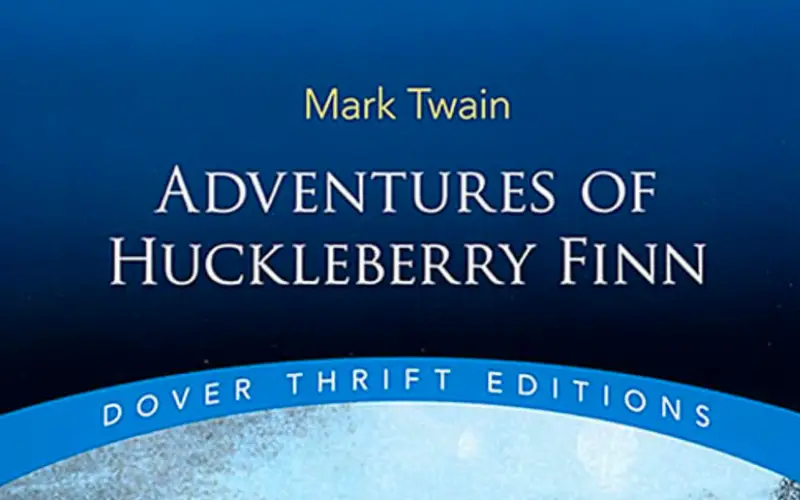
Synopsis of The Adventures of Huckleberry Finn
The Adventures of Huckleberry Finn is a novel by Mark Twain, first published in the United Kingdom in December 1884 and in the United States in February 1885. The novel is told in the first person by Huckleberry “Huck” Finn, a friend of Tom Sawyer and narrator of two other Twain novels (Tom Sawyer Abroad and Tom Sawyer, Detective). It is a direct sequel to The Adventures of Tom Sawyer.
The Adventures of Huckleberry Finn is a coming-of-age story that follows Huck as he escapes his abusive father and sets out on a journey down the Mississippi River with Jim, a runaway slave. Along the way, they encounter a variety of characters and situations that challenge Huck’s beliefs about race, freedom, and what it means to be a good person.
Some of the themes explored in The Adventures of Huckleberry Finn include:
- The nature of good and evil: Huck is a good person who is trying to do the right thing, but he is constantly surrounded by people who are doing bad things.
- The importance of freedom: Huck Finn runs away from home in search of freedom and while on his journey, Huck meets Jim, an escaped slave who is also seeking freedom. Huck learns that freedom is not just about being free from physical constraints, but also about being free to to make your own choices.
- The relationship between race and identity: The novel explores the idea that race is a social construct, and not something that is inherent in a person.
- The power of friendship: Huck learns the power of friendship when he and Jim quickly form a strong bond. They learn to trust each other, regardless of their race or social status.
- The importance of following one’s conscience: Huck is often faced with choices that go against what society expects of him. For example, he knows that it is wrong to own slaves, but he also knows that it is illegal to help a runaway slave. In the end, Huck chooses to help Jim escape.
The Controversy of The Adventures of Huckleberry Finn
The Adventures of Huckleberry Finn has been praised for its realistic portrayal of racism in the antebellum South, but it has also been criticized for its use of the n-word, which is used over 200 times in the text. Some critics argue that the use of the n-word is offensive and perpetuates racism, while others argue that it is an accurate reflection of the language used at the time and that it is important to preserve the novel’s historical context.
Here are some additional details about the controversy surrounding The Adventures of Huckleberry Finn:
- Banned & challenged: The novel has been banned or challenged in schools and libraries across the United States.
- Removed: In 1957, the novel was removed from the curriculum in the New York City school system. In 2011, a school district in San Francisco, California, voted to remove the novel from its required reading list.
- Alternatives: In 2015, a school district in Kansas City, Missouri, voted to keep the novel on its required reading list, but to provide students with an alternative book if they found the n-word to be offensive.
The controversy over The Adventures of Huckleberry Finn is a complex one, and there is no easy answer. Some people believe that the novel should be banned because of its use of the n-word, while others believe that it is an important work of literature that should be read and studied. Ultimately, it is up to each individual to decide whether or not they are comfortable reading the novel.
Conclusion
These are just a few of the many controversial books that have been published over the years. Censorship is a complex issue, and there is no easy answer to the question of whether or not a book should be banned. However, it is important to remember that banning books does not erase them. It simply prevents people from reading them, which can have a negative impact on our society.
Read More Fun Facts
Learn more fun facts with Trivia Mastermind content.
Play Trivia!
Challenge yourself and play trivia questions with answers and explanations.
Recent Posts
Science Trivia - Astronomy ...
Step into a realm of nostalgia as we embark on a journey through the annals of pop culture and bid farewell to 35 recently obsolete technologies. In the ever-evolving landscape of innovation, certain...
